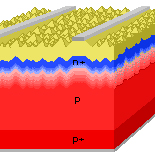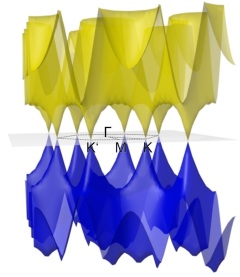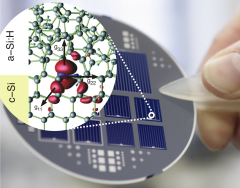Institute Silicon Photovoltaics
Topics
The research program of the institut is related to two topics of POF III,
- Energy Efficiency, Materials and Resources (EMR) Topic: Methods and Concepts for Material Development
- Renewable Energies (RE) Topic: Solar cells of the next generation.
They are closely connected through the analytical methods and the technological processes of the department.




